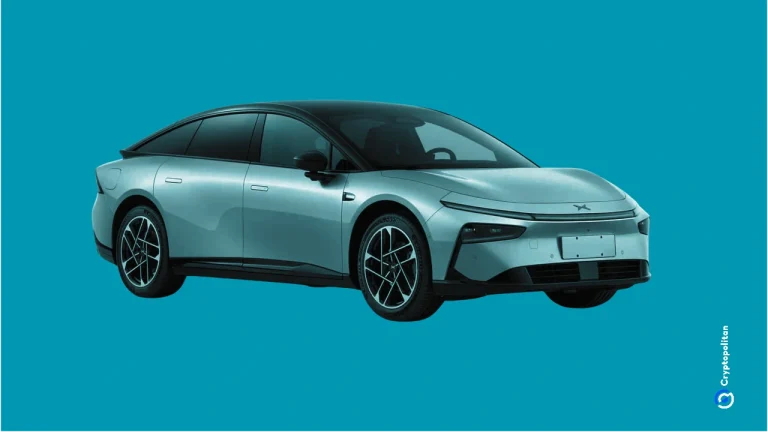Key Takeaways
- XPeng announced plans to launch robotaxis in 2025, powered by its in-house designed Turing AI chips.
- A second-generation humanoid robot, also featuring Turing chips, is scheduled for mass production next year.
- The company is leveraging Alibaba’s AutoNavi and Amaps platforms for robotaxi navigation and booking.
- XPeng is developing advanced driver-assist systems, with the first set for release in Q1 2026, targeting European city layouts.
- Volkswagen will be the first external automaker to utilize XPeng’s new driver-assist technology.
XPeng Unveils Ambitious AI and Robotics Roadmap
XPeng has revealed significant advancements in artificial intelligence and robotics during its recent AI Day event in Guangzhou. The company announced its intention to launch robotaxis commercially next year, alongside a second-generation humanoid robot, both driven by proprietary AI chips developed in-house. This strategic pivot marks XPeng’s evolution from solely an electric vehicle manufacturer to a broader autonomous systems developer.
The upcoming robotaxis will feature sophisticated technology, with each vehicle equipped with four of XPeng’s custom-designed Turing AI chips, delivering a combined computing performance of 3,000 TOPS. These autonomous vehicles will operate using the second version of XPeng’s vision-language-action (VLA) model, engineered to interpret visual input and execute actions without human intervention.
💡 The robotaxis will incorporate external displays on the sun visors to communicate vehicle information, such as speed, to pedestrians and other road users. Initial testing is slated to commence in Guangzhou, with plans to expand the service to additional Chinese cities by 2026.
Robotaxi Operations Enhanced by Alibaba’s Mapping Expertise
To facilitate its robotaxi service, XPeng is forging a strategic partnership with Alibaba. This collaboration will integrate XPeng’s autonomous vehicles with Alibaba’s AutoNavi and Amaps ride-hailing platforms, streamlining routing and booking processes. By leveraging these established services, XPeng aims to seamlessly integrate its robotaxis into the existing transportation ecosystem, rather than developing a standalone platform.
✅ This alliance positions XPeng among other leading companies that are actively pursuing the development and deployment of large-scale driverless fleets.
XPeng’s Co-President, Gu, highlighted that the company has been advancing similar technologies, including flying cars and humanoid robotics, for some time, though not as publicly as competitors like Tesla. Gu stated that while there are areas of technological convergence with Tesla, XPeng has had earlier starts in certain domains.
The company has already demonstrated a prototype for a flying car, distinguishing itself as one of the few automotive manufacturers exploring both terrestrial and aerial mobility solutions. Gu also acknowledged that Tesla has been more vocal about its commercialization strategies, whereas XPeng is now beginning to share its technological progress more broadly.
Advancements in Humanoid Robots and Driving Assistance Systems
XPeng also unveiled the second-generation Iron humanoid robot, which is slated for mass production commencing next year. This advanced robot is powered by three Turing chips and utilizes a solid-state battery for enhanced performance and longevity.
The company intends to offer customization options for its humanoid robots, including variations in body shape and hairstyles. However, CEO He Xiaopeng noted that widespread home adoption of these robots is not an immediate prospect due to their current high cost and China’s competitive factory labor costs.
⚡ Initially, these robots are expected to serve in roles such as tour guides, sales assistants, and office building concierges, with deployments beginning within XPeng’s own facilities. He Xiaopeng projected that in the coming decade, the number of robots sold is likely to surpass the number of vehicles sold.
Furthermore, XPeng announced the forthcoming introduction of a new driver-assist system in the first quarter of 2026. This system is specifically designed to enhance vehicle navigation through narrow urban streets, particularly in European cities, reducing the need for extensive manual driver input.
📌 Volkswagen has been confirmed as the inaugural external manufacturer to adopt this new driver-assist technology, with XPeng planning to extend its availability to other automakers. XPeng’s CEO indicated that this system requires less human intervention than Tesla’s Full Self-Driving (FSD) feature and demonstrated faster completion times on test routes. The deployment of FSD in mainland China has been notably slower due to regulatory hurdles.
XPeng began rolling out its own driver-assist software in major Chinese cities in early 2023, a feature that has rapidly gained traction among domestic EV manufacturers competing in a highly saturated market.
Expert Summary
XPeng is accelerating its AI and robotics initiatives, announcing robotaxi launches for 2025 and a new humanoid robot. The company’s advancements are powered by its in-house Turing AI chips and enhanced by strategic partnerships, notably with Alibaba for navigation services. XPeng is also refining its driver-assist technologies, aiming for broad adoption by other automakers.

